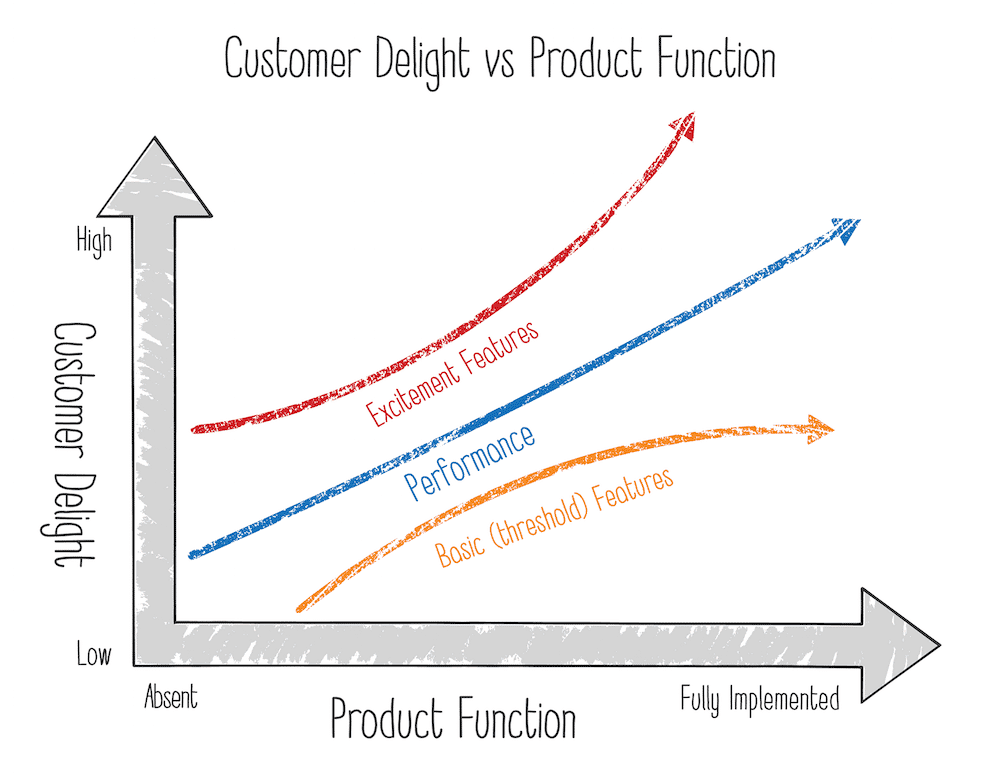Product management can often feel like a risky balancing act, like walking a tightrope without a safety net below. In many cases, you’ll face conflicting agendas from different constituencies — and you’ll need to meet those conflicting demands, or at least address them all, simultaneously.
Your sales team, for example, will ask you to prioritize a set of complex new features in your next release, but the executive team will demand that the release hit the market within a tight timeframe. Or you’ll need the next version of your product to address all identified bugs, but you’ll also need those same developers to implement the new themes you’ve identified as strategically crucial for the next release.
And here’s one of the trickiest balancing acts of all for a product manager: Your competitor’s product roadmap are offering X, Y and Z, so your product needs to as well. But your executive and sales teams also tell you that your product has to differentiate itself from the competition, to be an innovator and even a game-changer.
Should Competitive Products Drive Your Roadmap?
How should you handle this conundrum? What role should the competitive landscape play in your product roadmap strategy?
As with many aspects of your role as a product manager, you’ll find that best way to develop successful products is by finding the right middle ground. In this case, that middle ground will be between building what’s already proven successful for your competitors and developing innovative new solutions that your competitors haven’t thought of yet (or haven’t found cost-effective ways to implement).
If you allow product roadmap competition to become the primary driver for your product roadmap strategy, you risk developing a me-too product. If you develop your product roadmap in a vacuum, however, you risk building a product nobody wants.
Which means you’ll want to first understand the competitive landscape, knowing what’s out there and what your competitors offer that your customers will also demand from your product, and then innovate to add your product’s unique offerings.
The Risks of Allowing Competition to Drive Your Roadmap
Although few product managers intentionally set out to build a competitor-driven product, it is easy to fall into this trap.
You and your team will research the competitive landscape, digging deep into the products already on the market to solve the problem you want yours to address.
This can quickly turn into an exercise in copying a long list of features across several of the leading products in your market, and then simply turning that combined list into a backlog and even the roadmap for your product.

And then… voila! You’ve developed Dropbox! (Only so did Dropbox, nine years ago.)
The Risks of Ignoring Your Competition When Creating Your Roadmap
So, the risk of allowing the competitive landscape to drive your product roadmap is that your team will develop a product that, by definition, enters the market already being beaten by a successful incumbent. That entrenched competitor is currently serving your target customers, has already built name recognition, and can claim to have market experience, a track record, and a roster of satisfied users that your product can’t.
But the risk of going too far in the other direction — trying to develop your product roadmap in a vacuum, ignoring the competitive landscape entirely — is even riskier. In fact, the risks here are two-fold.
First, if you fail to incorporate at least those must-have elements common to most or all products in your competitive field, then you’ll be going to market with a product that under-delivers, that fails to solve at least some of the problems your customers have already come to expect from a product such as yours.
Second, and even more serious, developing a roadmap strategy without first researching your product roadmap competition also means you miss out on all of the learnings your competitors spent time and money gaining in their own roadmap development. That means your chances are much higher of going to market with a product that fails to win customers.
3 Strategies for Properly Leveraging your Product Roadmap Competition Landscape
So, what’s the solution? Where is this middle ground between relying too heavily for your roadmap strategy on what your competitors are doing, and ignoring those competitors completely?
Here are three ways to find that middle ground, and to develop products that at once can do what your competitors can — and more.
1. Use the Kano Model

In the product roadmap strategy, the Kano model helps you prioritize your product’s development plan by evaluating potential themes and features on a scale weighing product function against customer delight.
What’s important for our discussion here is that the Kano model takes into account the competitive pressure your product will face (or the competitive advantage you’ll gain) for any feature you’re considering including in your roadmap.
For example, one of the three primary categories of features the Kano model identifies is the “threshold” or basic feature. This is the type of feature your product simply needs — because your customer will demand it and your competitors already have it.
Kano then identifies “performance” features, features that make your product more efficient or reliable, and that you’ll likely also need to invest in because failing to do so will place you at a disadvantage against your competitors.
And finally, Kano places the most strategic value on “excitement” features, where you can really pull away from your competitors and deliver something your customers aren’t expecting but that they will truly appreciate.
In other words, the Kano model can serve as a great framework for finding the middle ground we’ve been discussing — to develop your product roadmap with an eye always on your competitive environment, but with plenty of room to innovate and deliver excitement or delight.
For a more detailed discussion about the Kano model, watch this short video clip from Jim Semick’s presentation at ProductCamp Portland. You can also learn more about the Kano model in our free downloadable book on product roadmaps.
2. Learn From Your Competitors’ Customers

Here’s another useful strategic idea for developing products that leverage the best of the competitive landscape but still allow you to pull ahead: Spend time listening to your competitors’ customers.
The value in this strategy is that you can learn at once what your competitors are doing well, what their customers (and your prospects) find valuable in their products, and what those customers find lacking in those same products.
Spend time visiting your competitors’ customer discussion boards. Read the comments on their blog posts and other content. You’ll find invaluable learnings in these candid customer conversations. They’ll tell you what they like about your product roadmap competition, what they couldn’t live without in a future release, what they find unnecessary, and — perhaps most valuable — what they wish the product had.
The second-best thing about finding this data is that it’s often free — or, even better, paid for by your competitors — and just waiting for you to find and put to strategic use in developing your own product roadmap.
And the best thing? Chances are your competitors aren’t being as diligent as they should be in checking in regularly with this customer-generated content, even in the forums they created themselves. This means in many cases your competitors are failing to learn these data points for themselves.
3. Get to Know Your User and Customer Personas Inside and Out

As you probably already know, the surest path to a successful product is knowing your market. It’s understanding your user and customer personas, and the problems they face, so well that you can determine how to help them solve these problems even if there’s no competitive blueprint already on the market that you can copy.
What this means for our discussion is that, ultimately, the way to develop your roadmap with the right balance of competitive intelligence and forward-thinking innovation is to start with becoming an expert on your target customers.
If you first put the time into researching the people who will ultimately buy (your customer persona) and use (your user persona) your product, then you will naturally find that proper middle ground in your roadmap development.
The place to start, then, isn’t with a comprehensive study into all product roadmap competition. Nor is it locking yourself and your team away in a marathon brainstorming session, thinking in a vacuum and intentionally avoiding contact with any product roadmap competition. The place to start your roadmap development is understanding how to solve key problems for your persona.




